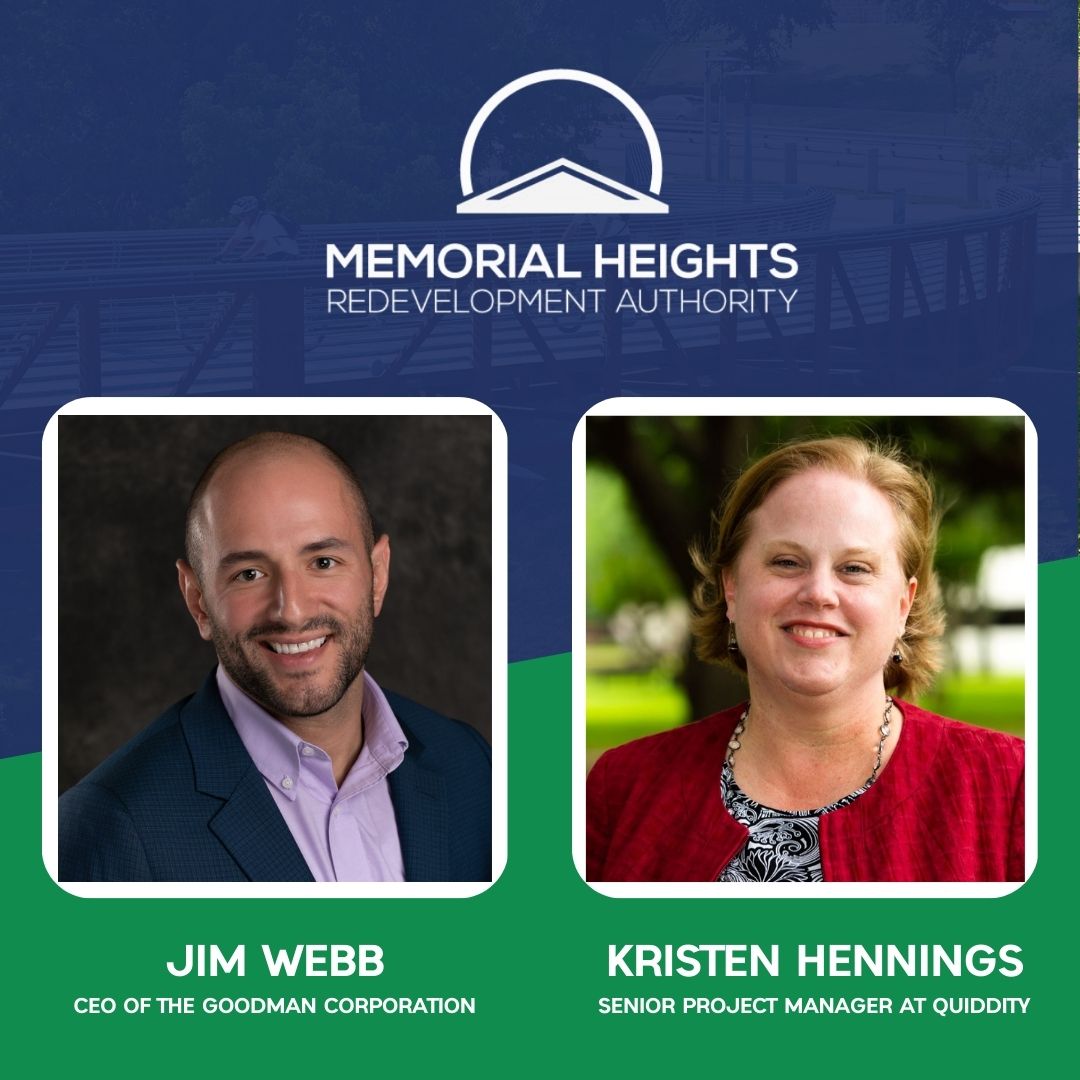
Changes are happening every day at the Shepherd Durham Project. The improvements are designed to make our roads safer for drivers, pedestrians, bike riders, and the people who live, work, and travel through the area. From new bus stops to better sidewalks, and safer bike lanes to more shade trees and better lighting, this project will benefit the community and enhance the quality of life for many.
Hear from the Experts: What it Takes to Make a Million-Dollar/Multi-Year Roadway Improvement
Who are the transportation professionals working hard to ensure the project is a success? We sat down with two recently to learn more about what they do every day. Jim Webb is the CEO of The Goodman Corporation, where he assists public and private sector clients plan, design, fund, and implement infrastructure projects. For more than 30 years, Senior Project Manager at Quiddity, Kristen Hennings, PE has helped plan, design, and manage parks, roadways, and underground utility projects across the Houston METRO area.
Question: What is your role on the Shepherd Durham Project?
Jim Webb: We started by developing a long-term strategy for capital improvement planning and funding that would leverage available federal funding. The Shepherd Durham Corridor is a major priority in the area, and we’ve helped every step of the way, from planning to corridor design. We’ve also been involved in all of the funding pursuit efforts. Early on, we were tasked with finding federal funding to make the project happen. We pursued several different grant opportunities targeting major investment projects, working collaboratively with the City of Houston. Our successful federal funding proposal secured bi-partisan support from our elected officials. Another big part of the process was a cost-benefit analysis that showed the enormous benefits of the project.
Kristen Hennings: As the project manager, I lead the team of designers, planners, surveyors, and the different agencies we worked with to study the corridor and determine what improvements needed to be made. I also work closely with the city to make sure our improvements match the long-term vision. I get to be a part of an amazing team as we work to better connect people and places in Houston.
Question: What do you think is the biggest benefit of the project?
Jim Webb: I live on the corridor, so I see the daily work and how it impacts the neighborhood and commuters. Keeping traffic moving and accommodating adjacent property owners is important to the team. Previously, I didn’t like walking along Shepherd with my kids because of the high-speed traffic and narrow sidewalks. It’s historically been a dangerous corridor along both streets, but this project will help calm traffic, reduce congestion, protect pedestrians, and create a bicycle corridor. I recently ran along one of the updated sidewalks!
Kristen Hennings: For me, it’s Shepherd and Durham becoming a place where people can come from the neighborhood- biking, walking, or driving, or from somewhere else, to meet friends and family in the area. The area is redeveloping rapidly, even during our road construction, and it’s going to feel really different in the next few years.
Question: What are some of the project’s major goals?
Kristen Hennings: The first concern to address was safety. The corridor has a very high vehicle crash rate, more than four times the state average for similar roadways. Drivers regularly go higher than the posted 35 MPH speed, and drivers who don’t live in the area or who aren’t paying attention often turn the wrong way onto the one-way streets. Another big component of the project is connectivity and mobility. We move a lot of cars through the corridor, but mobility is not just for vehicles. We also need to connect our roadways with the communities on either side. The current roadway isn’t comfortable for most pedestrians and cyclists. Improving that is key for these vibrant walkable neighborhoods. The more people we can entice to walk in the neighborhoods helps reduce traffic. We’re also adding shade trees and better lighting, so people feel safe walking at night. The last major component is drainage, working to protect the area from flooding from large storms in the future.
Question: What are the challenges to keeping the project running on time?
Jim Webb: There are a lot of things underground that impact the improvement project. We are working with public and private utilities and other stakeholders to move important infrastructure, but that takes time.
Question: How many people does it take to design a corridor?
Kristen Hennings: It takes a team. I’ve got a group of urban roadway engineers, traffic engineers, landscape architects, planners, surveyors, and more who have come together with experience working in a tight urban area and providing improvements for vehicles, cyclists, and pedestrians. It’s not just the design team, we also have owners and agencies that are committed to the vision of the project, like MRHA. All of these partners want to improve things the right way and make things better overall for all of the corridor’s users. The City of Houston is another big supporter of the project, which is important because their team will maintain the infrastructure moving forward.
Learn more about the ongoing construction by checking updates at shepherddurham.com.

